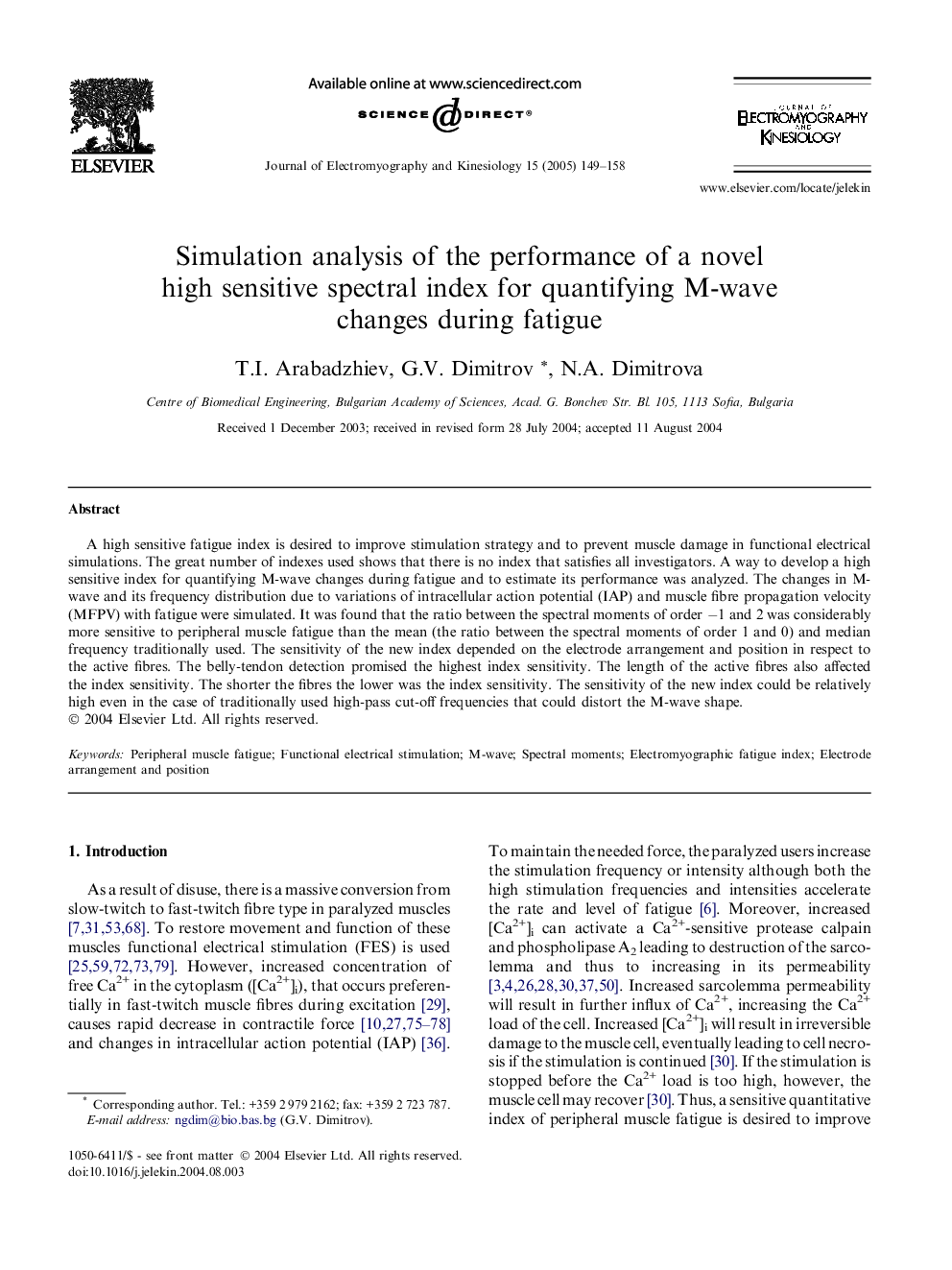| Article ID | Journal | Published Year | Pages | File Type |
|---|---|---|---|---|
| 9353605 | Journal of Electromyography and Kinesiology | 2005 | 10 Pages |
Abstract
A high sensitive fatigue index is desired to improve stimulation strategy and to prevent muscle damage in functional electrical simulations. The great number of indexes used shows that there is no index that satisfies all investigators. A way to develop a high sensitive index for quantifying M-wave changes during fatigue and to estimate its performance was analyzed. The changes in M-wave and its frequency distribution due to variations of intracellular action potential (IAP) and muscle fibre propagation velocity (MFPV) with fatigue were simulated. It was found that the ratio between the spectral moments of order â1 and 2 was considerably more sensitive to peripheral muscle fatigue than the mean (the ratio between the spectral moments of order 1 and 0) and median frequency traditionally used. The sensitivity of the new index depended on the electrode arrangement and position in respect to the active fibres. The belly-tendon detection promised the highest index sensitivity. The length of the active fibres also affected the index sensitivity. The shorter the fibres the lower was the index sensitivity. The sensitivity of the new index could be relatively high even in the case of traditionally used high-pass cut-off frequencies that could distort the M-wave shape.
Related Topics
Health Sciences
Medicine and Dentistry
Orthopedics, Sports Medicine and Rehabilitation
Authors
T.I. Arabadzhiev, G.V. Dimitrov, N.A. Dimitrova,
